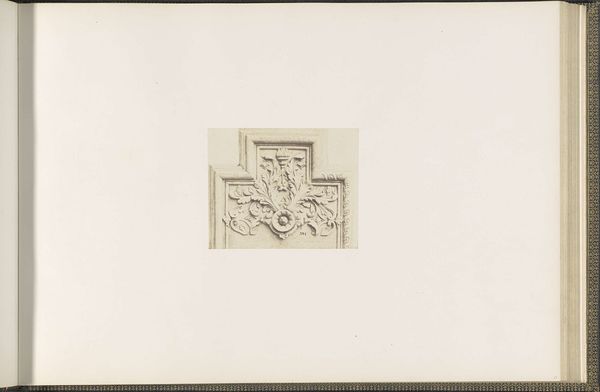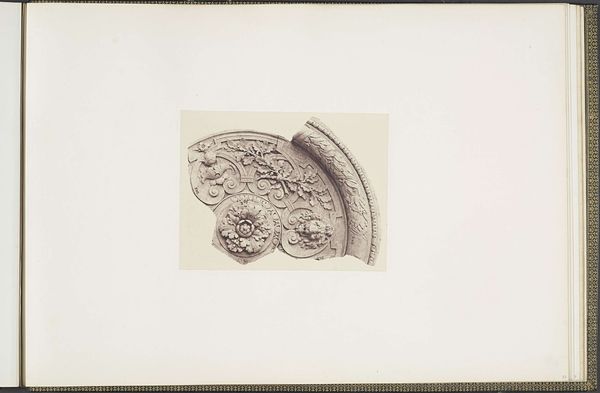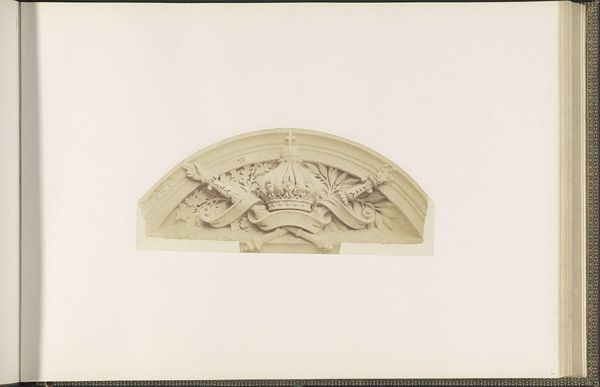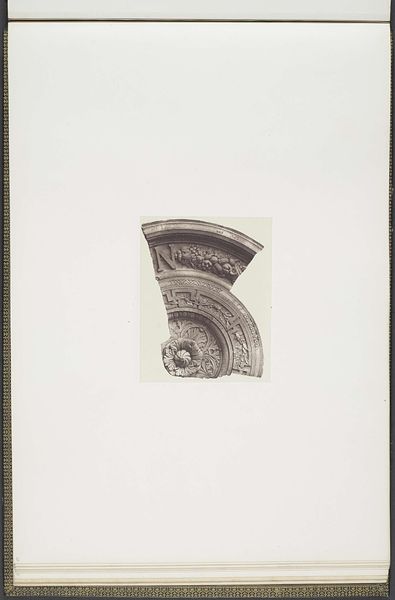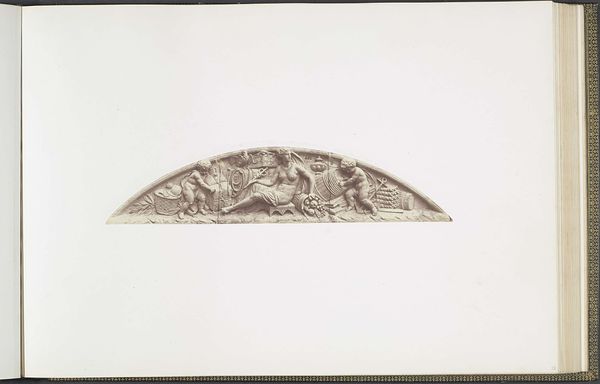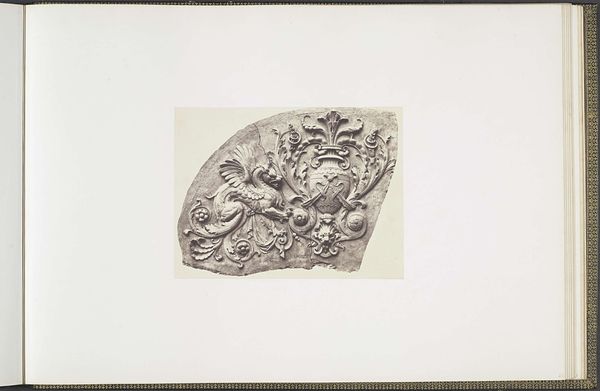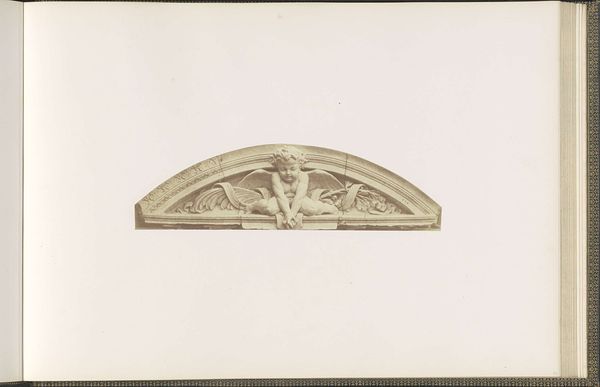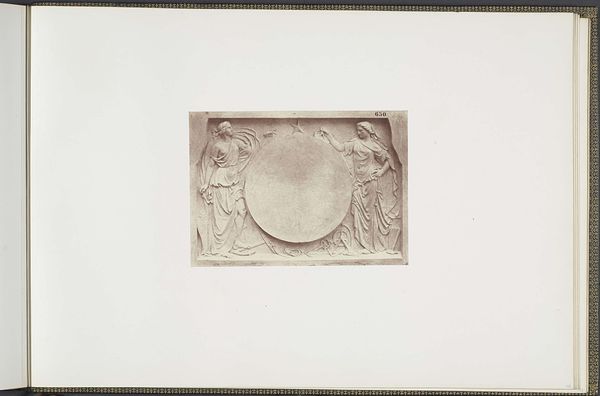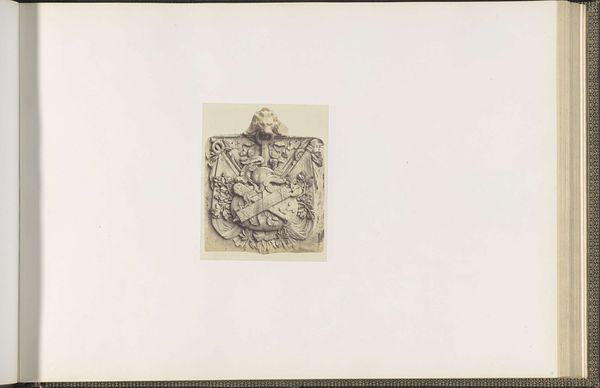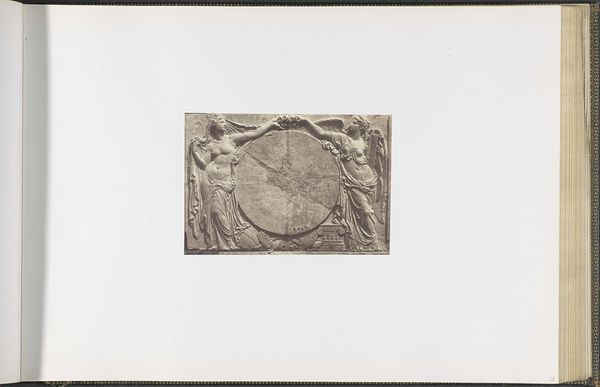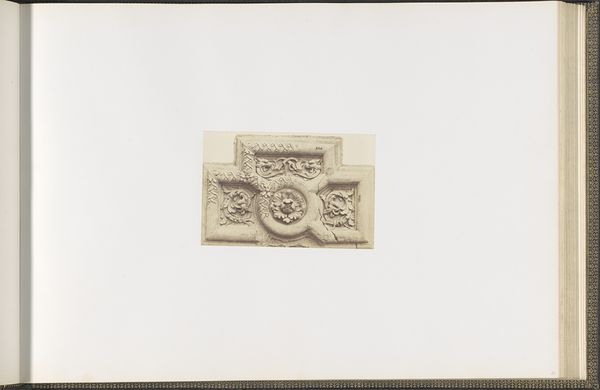
Gipsmodellen voor een versiering van het Palais du Louvre door Jules Lafrance c. 1855 - 1857
0:00
0:00
edouardbaldus
Rijksmuseum
drawing, relief, paper, graphite, architecture
#
drawing
#
neoclacissism
#
relief
#
paper
#
graphite
#
history-painting
#
academic-art
#
architecture
Dimensions: height 378 mm, width 556 mm
Copyright: Rijks Museum: Open Domain
Curator: Let’s turn our attention to this graphite drawing on paper from the Rijksmuseum collection. Created by Edouard Baldus around 1855 to 1857, it depicts Jules Lafrance’s plaster models intended for decoration of the Palais du Louvre. What strikes you about this piece? Editor: The composition feels incomplete, fragmented even. It's this close-up on architectural details that draws my eye in. There's a tension between the smoothness of the plaster and the sharp contrast provided by the graphite rendering of the moldings, wreaths, and that imposing "N" insignia. Curator: That initial "N" is important; it signified Napoleon III's ambition to leave an indelible mark on French history and architecture. Consider that Lafrance’s work, meticulously captured by Baldus, wasn't just ornamentation. These designs are statements of power, carefully constructing the identity of an empire through visual language and embedding it directly into the urban landscape. Editor: Yes, and thinking about that visual language, the use of Neoclassical motifs interests me—laurel wreaths signifying victory, the Roman-style lettering. These aren't arbitrary choices; they are allusions meant to evoke the grandeur and legitimacy of past empires and project those qualities onto the Second Empire. Curator: Exactly. And Baldus, as a photographer and draughtsman of architectural monuments, was in many ways complicit in perpetuating that image. These kinds of meticulously crafted images reinforced the idea of imperial authority and cemented the emperor’s narrative into public perception. It invites us to consider art’s role in shaping social and political realities. Editor: From my point of view, detaching the work from that context momentarily allows us to better see the technical mastery at play. How Baldus manages to use graphite to capture depth and texture is commendable. There's also a stark contrast with the emptiness of the paper surrounding the graphite rendering. Curator: A fruitful conversation indeed. This artwork certainly offers a multilayered perspective, touching upon history, technique, and politics. Editor: Absolutely, a work that encourages careful consideration and a wider understanding.
Comments
No comments
Be the first to comment and join the conversation on the ultimate creative platform.

